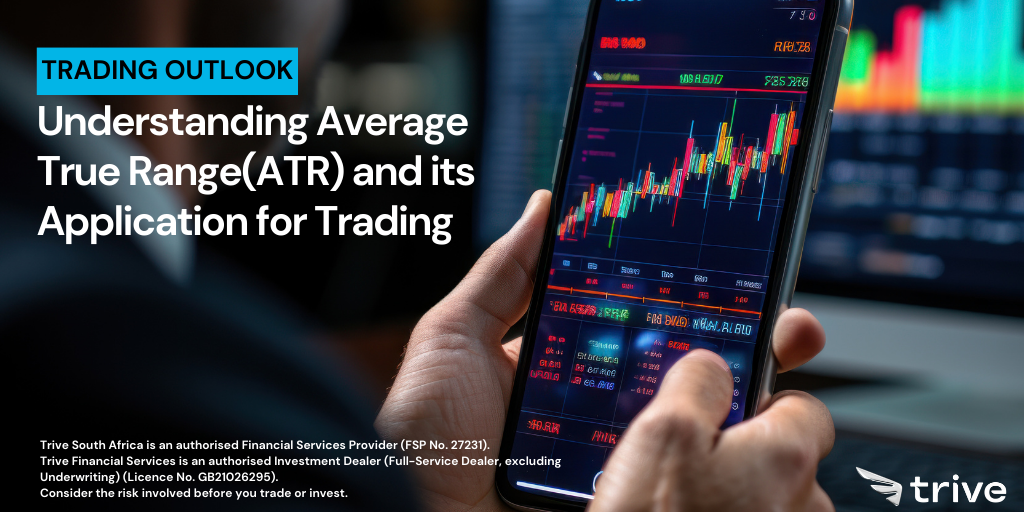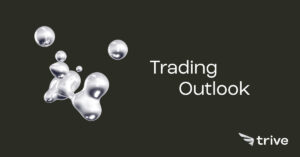
Average True Range (ATR) is a powerful technical indicator used by traders to measure market volatility. It provides valuable insights into the potential range of price movements over a specified period, aiding traders in setting appropriate stop-loss levels, determining position sizes, and identifying potential breakout opportunities. Let’s delve deeper into what ATR is and how it can be effectively applied in trading strategies.
What is Average True Range (ATR)?
ATR was developed by J. Welles Wilder Jr. as a tool to measure the volatility of a financial instrument. Unlike other volatility indicators that only consider price changes, ATR incorporates all price movements (including gaps), making it a more comprehensive measure of market volatility. Essentially, ATR calculates the average range between a series of high and low prices over a specified period, typically 14 periods by default.
Application of ATR in Trading
- Setting Stop-Loss Levels: ATR can be used to set dynamic stop-loss levels based on market volatility. By multiplying the ATR value by a multiple (e.g., 2 or 3), traders can determine an appropriate distance from the entry price to place their stop-loss orders. In highly volatile markets, wider stop-loss levels may be necessary to avoid premature exits due to noise.
- Determining Position Sizes: ATR can also assist traders in determining the appropriate position sizes based on the level of volatility in the market. A higher ATR value indicates greater volatility, prompting traders to reduce their position sizes to manage risk effectively. Conversely, lower ATR values suggest lower volatility and may allow for larger position sizes.
- Identifying Breakout Opportunities: Breakout traders often use ATR to identify potential breakout levels. By comparing the current price range to historical ATR values, traders can gauge whether the market is experiencing heightened or subdued volatility. Breakouts accompanied by an increase in ATR could signal the beginning of a new trend, providing opportunities for traders to enter positions in the direction of the breakout.
- Confirming Trend Strength: ATR can be used in conjunction with other technical indicators to confirm the strength of a trend. In uptrends, rising ATR values indicate increasing volatility and potentially stronger bullish momentum. Conversely, declining ATR values in downtrends may signal weakening bearish momentum, suggesting a possible trend reversal.
Conclusion
Average True Range (ATR) is a versatile tool that provides valuable insights into market volatility, enabling traders to make informed decisions and manage risk effectively. By understanding how to calculate and apply ATR in trading strategies, traders can enhance their decision-making process and improve their overall trading performance.
Incorporating ATR into trading strategies requires careful consideration of market conditions, risk tolerance, and individual trading objectives. While ATR offers valuable insights into market volatility, it is essential to use it in conjunction with other technical indicators and fundamental analysis to make well-rounded trading decisions.
As with any trading indicator, it is crucial to practice proper risk management and adhere to trading discipline to maximize the benefits of ATR and minimize potential losses. By incorporating ATR into their trading arsenal, traders can gain a deeper understanding of market dynamics and increase their chances of success in the financial markets.
Sources: Corporate Finance Institute, Investopedia, New Concepts in Technical Trading Systems (1978), Technical Analysis of the Financial Markets (1999)
Piece Written By Nkosilathi Dube, Trive Financial Market Analyst
Disclaimer: Trive South Africa (Pty) Ltd (hereinafter referred to as “Trive SA”), with registration number 2005/011130/07, is an authorised Financial Services Provider in terms of the Financial Advisory and Intermediary Services Act, 37 of 2002. Trive SA is authorised and regulated by the South African Financial Sector Conduct Authority (FSCA) and holds FSP number 27231. Trive Financial Services Ltd (hereinafter referred to as “Trive MU”) holds an Investment Dealer (Full-Service Dealer, excluding Underwriting) Licence with licence number GB21026295 pursuant to section 29 of the Securities Act 2005, Rule 4 of the Securities Rules 2007, and the Financial Services Rules 2008. Trive MU is authorized and regulated by the Mauritius Financial Services Commission (FSC) and holds Global Business Licence number GB21026295 under Section 72(6) of the Financial Services Act. Trive SA and Trive MU are collectively known and referred to as “Trive Africa”.
Market and economic conditions are subject to sudden change which may have a material impact on the outcome of financial instruments and may not be suitable for all investors. Trive Africa and its employees assume no liability for any loss or damage (direct, indirect, consequential, or inconsequential) that may be suffered. Please consider the risks involved before you trade or invest. All trades on the Trive Africa platform are subject to the legal terms and conditions to which you agree to be bound. Brand Logos are owned by the respective companies and not by Trive Africa. The use of a company’s brand logo does not represent an endorsement of Trive Africa by the company, nor an endorsement of the company by Trive Africa, nor does it necessarily imply any contractual relationship. Images are for illustrative purposes only and past performance is not necessarily an indication of future performance. No services are offered to stateless persons, persons under the age of 18 years, persons and/or residents of sanctioned countries or any other jurisdiction where the distribution of leveraged instruments is prohibited, and citizens of any state or country where it may be against the law of that country to trade with a South African and/or Mauritius based company and/or where the services are not made available by Trive Africa to hold an account with us. In any case, above all, it is your responsibility to avoid contravening any legislation in the country from where you are at the time.
CFDs and other margin products are complex instruments and come with a high risk of losing money rapidly due to leverage. You should consider whether you understand how these products work and whether you can afford to take the high risk of losing your money. Professional clients can lose more than they deposit. See our full Risk Disclosure and Terms of Business for further details. Some or all of the services and products are not offered to citizens or residents of certain jurisdictions where international sanctions or local regulatory requirements restrict or prohibit them.




